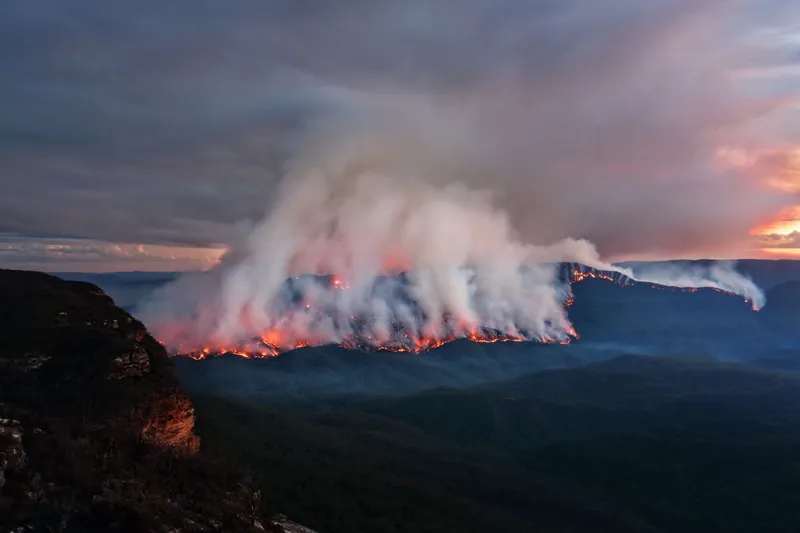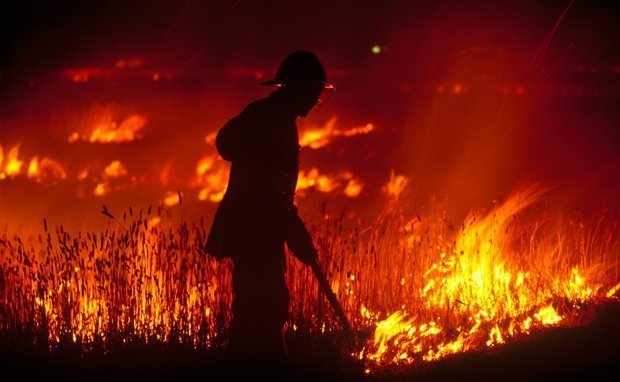Crafting Your Residential property's Safety: A Step-by-Step Bushfire Management Plan Guide
Crafting Your Residential property's Safety: A Step-by-Step Bushfire Management Plan Guide
Blog Article
The Significance of Bushfire Monitoring in Fire Defense
In the world of fire defense, the importance of reliable bushfire management can not be underrated. As communities worldwide come to grips with increasing instances of wildfires, the proactive strategy to avoid and minimizing these all-natural catastrophes via critical bushfire monitoring techniques has become an essential aspect. Past the prompt hazard to human life and building, the interaction between bushfire management and ecological conservation, community participation, and climate adjustment postures complex obstacles that demand thorough solutions.
Relevance of Proactive Bushfire Avoidance
Aggressive bushfire prevention approaches are essential in alleviating the ravaging effects of wildfires on neighborhoods and ecosystems. One essential element of proactive bushfire prevention is fuel management.
Enlightening the public on fire safety techniques and advertising area understanding regarding the value of bushfire prevention are important components of proactive strategies. Inevitably, proactive bushfire prevention plays a substantial function in guarding communities and communities from the harmful impacts of wildfires.
Duty of Neighborhood Interaction in Fire Security
Involving the area in fire defense initiatives is indispensable to boosting the performance of positive bushfire avoidance approaches. Neighborhood involvement plays a crucial duty in promoting a cumulative understanding of the dangers postured by bushfires and the significance of readiness procedures. By involving neighborhood residents, authorities can share essential information ablaze safety and security methods, evacuation treatments, and very early caution systems, equipping individuals to take proactive steps to protect their lives and buildings.
By cultivating a society of preparedness and cooperation, areas can enhance their capacity to respond efficiently to bushfire emergencies, reducing the impact on residential properties and lives. Inevitably, area involvement is a keystone of extensive fire defense approaches, highlighting the relevance of collective action in safeguarding at risk locations from the danger of bushfires.
Significance of Wildlife Conservation in Bushfire Monitoring
Conservation of wild animals plays a crucial duty in effective bushfire monitoring approaches, making certain the defense of varied communities and biodiversity in fire-prone areas. Wild animals conservation is crucial as it contributes to the general durability of environments, helping in their capacity to endure and recover from the impact of bushfires. By preserving habitats and safeguarding various types, the all-natural equilibrium within these communities is maintained, which is necessary for their lasting health and sustainability.
Moreover, wild animals conservation additionally aids in reducing the threat and strength of bushfires. Healthy environments with unspoiled wild animals populations can function as natural firebreaks, decreasing the spread of fires and limiting their harmful capacity (BAL Report). Certain pet varieties, like delving pets or birds that spread out seeds, play unique roles in assisting or preventing fires in the post-fire regrowth of habitats
Including wild animals preservation into bushfire management techniques is not only crucial for protecting biodiversity however additionally for advertising the general health and wellness and durability of ecosystems when faced with enhancing fire threats.
Benefits of Strategic Fuel Decrease Programs
Tactically implementing gas reduction programs is important in reducing the risk and influence of bushfires in fire-prone regions. These programs entail controlled burning, mechanical clearing, and other methods to reduce the quantity of flammable greenery offered to sustain wildfires. By purposefully reducing gas loads in essential areas, such as near household communities or essential facilities, the strength and spread of bushfires can be considerably decreased.
One of the primary benefits of fuel reduction programs is the enhancement of overall fire resilience in an environment. By creating calculated gas breaks and minimizing the connection of plant life, these programs help to interrupt the path of a bushfire, making it less complicated for firefighters to contain and extinguish the blaze. Additionally, gas reduction programs can safeguard biodiversity by preventing excessively extreme fires that can ruin habitats and endanger wildlife populations.
Additionally, these programs can likewise safeguard human lives and property by decreasing the danger of disastrous fires that position a significant threat to areas. Ultimately, calculated fuel reduction programs play an essential duty in positive bushfire management and cultivating a much safer environment for both people and nature.
Impact of Environment Change on Bushfire Threat

Higher temperature levels lead to drier vegetation, making it more at risk to ignition. Minimized rainfall in certain areas prolongs dry spell conditions, better boosting the flammability of the landscape. Additionally, the transforming environment has actually modified wind patterns and weather, resulting in more irregular fire behavior and fast fire spread.
As the environment proceeds to change, the frequency and intensity of bushfires are expected to climb, necessitating a adaptive and aggressive method to bushfire management. Strategies should evolve to account for the transforming threat landscape, incorporating climate projections and thinking about lasting durability in fire monitoring preparation. Addressing the effect of climate change on bushfire risk is vital in creating reliable approaches to secure lives, home, and the environment.
Final Thought
Finally, aggressive bushfire prevention, community engagement, wild animals conservation, calculated fuel reduction programs, and factor to consider of environment modification are crucial components in efficient fire defense. By applying these techniques, we can much better manage bushfire risks and protect both human lives and the setting. Bushfire Risk. It is imperative that stakeholders collaborate to focus on these steps to minimize the devastating influence of bushfires on neighborhoods and environments

As the climate proceeds to alter, the regularity and strength of bushfires are expected to rise, demanding a positive and flexible approach to bushfire management.In final thought, aggressive bushfire avoidance, community interaction, wild animals preservation, strategic gas decrease programs, and consideration of environment adjustment are vital components in reliable fire protection.
Report this page